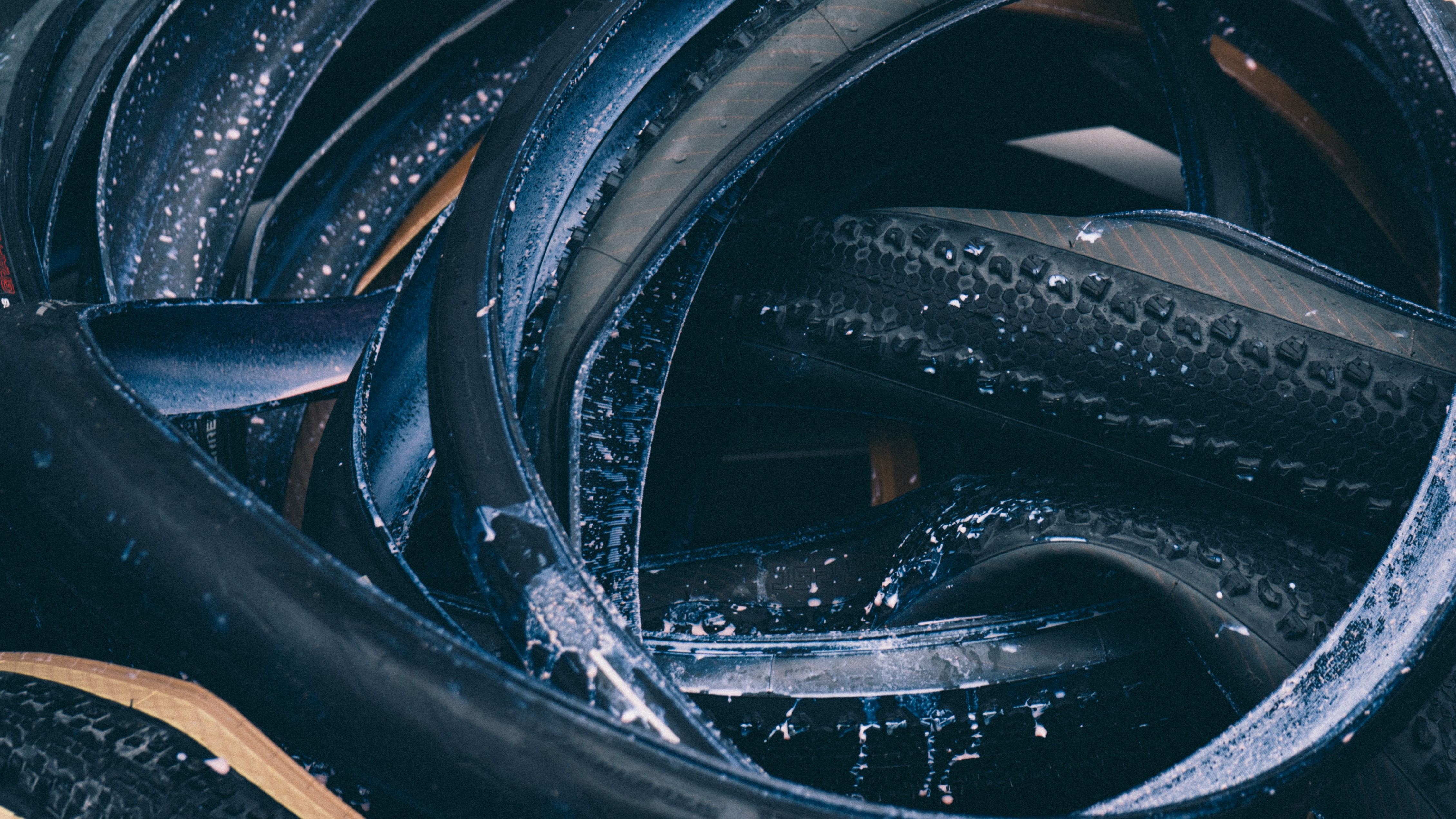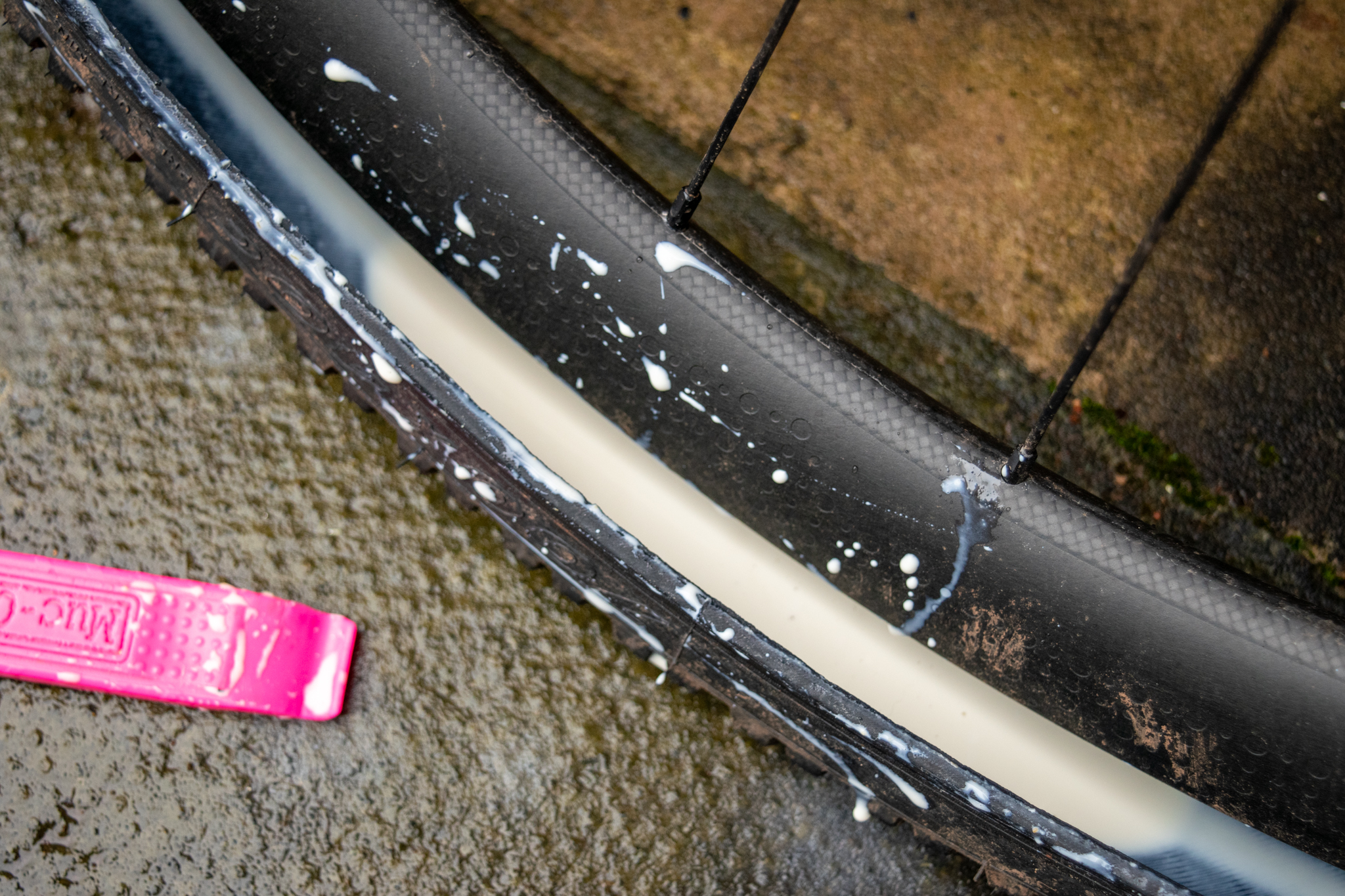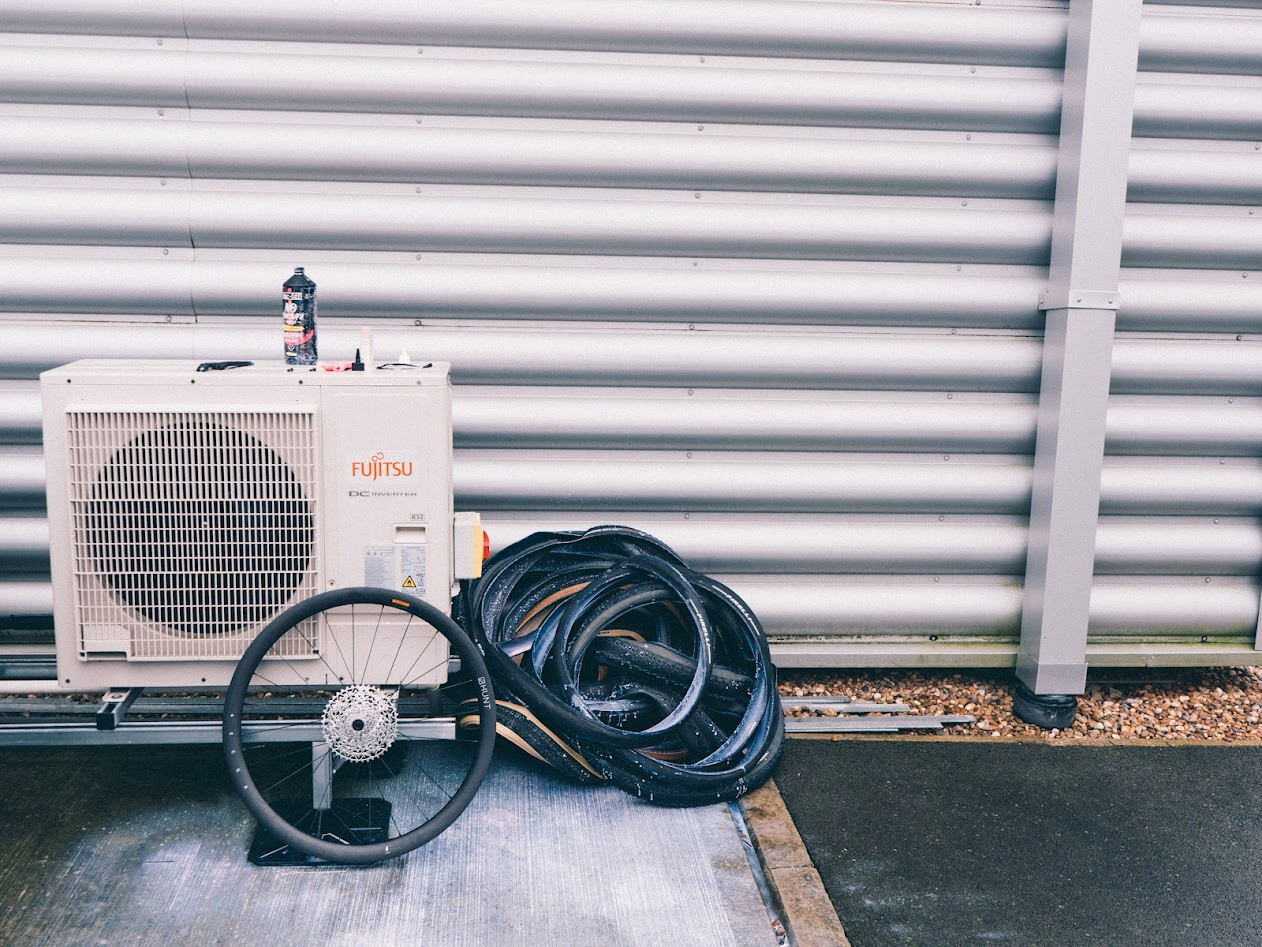I use inner tubes on all my road bikes: Here's why I still haven't embraced tubeless
I test bikes for a living, but all my own bikes have inner tubes

All of my own bikes are fitted with inner tubes, and part of my job is to test bikes for a living. At the very least, that tells you something about my preferences when it comes to tyres.
The dark side of tubeless winds me up, don't get me started on it. Before I go further, I understand that tubeless tyres are here, and they are almost certainly here to stay, but there are aspects of the tyre technology I don't like, think need improving and at worst can potentially put bike riders in danger.
This isn't designed to be an uninformed tubeless bashing, but a discussion and my opinion on what I don't like about it, and why for the foreseeable I'm sticking with tubes for riding on the road.
I know many cyclists worldwide are tubeless converts, I've not been living under a rock for the last decade. I've ridden many of the best tubeless road tyres, I've worked on them, and I've sold them, yet I still prefer inner tubes for my road bikes.
I acknowledge that for MTB and higher volume gravel tyres, a tubeless setup provides other benefits and is almost necessary for running lower pressures, thus increasing speed and comfort. I rode the Paris-Roubaix challenge on inner tubes last year with 28mm tyres, I had zero punctures or issues, something I was very proud about, but I admit I would likely have been faster on higher volume tyres with less pressure, something I could have only really done with tubeless.

It's the dark side of tubeless that I don't care for.
It's all fun and games when tubeless tyres are set up well and working. I've raced and ridden on tubeless tyres and fast carbon wheels and they feel fantastic. What I don't care for is when they aren't working as they should.
Get The Leadout Newsletter
The latest race content, interviews, features, reviews and expert buying guides, direct to your inbox!
We embraced tubeless tech to seal punctures for us, allowing us in a best-case scenario to keep riding as the tubeless sealant inside a tyre plugged a hole, and with a minimal loss in tyre pressure. If this happens, and you don't have to stop at the side of the road, then great, happy days, mine's a flat white at the cafe.
What I don't like - what actively annoys me - is when it doesn't pan out like this. As well as just the extra amount of overall work and cost needed for a system that was already beautifully simple with just a tyre and inner tube. I think that's the crux of it for me and what I struggle to get past.
I (touch wood) rarely puncture, which helps. But give me one of the best road bike tyres (my preference would be a Continental GP5000 or a Vittoria Corsa Pro) and a latex inner tube and I'm happy. It's fast enough for me, I'm not counting the watts that closely. We also found there isn't a massive amount of difference in terms of watts between a latex tube and tubeless setup in our CN Labs road tyre testing.
I don't want to have to execute the perfect tubeless tape job on my rim, I don't want to have messy sealant sloshing around in my wheels, nor on my garage floor, and I especially don't want to have to periodically remove it all, clean everything, ensure the valve is ok and refill with a load of fresh sealant. The path of least resistance is the one for me.
Speaking with fellow riders, particularly those with gravel bikes, they argue that they may regularly switch tubeless setups depending on the event they are riding which aids maintenance, or they just keep adding sealant until they wear a tyre out and then replace it. I can understand these points.
But for me, working with a punctured tube is just far preferable to working with a problematic tubeless setup. There are simply fewer elements in the equation to go wrong.
I'm willing to bet it's not just me who has had their bike and cycling kit covered by spewing sealant as it's shot out of the hole in a deflating road tyre while we desperately hope it seals itself before the tyre loses all of its air.
I'm quite particular about my bike and kit, so being covered in sealant doesn't appeal to me one bit. Some dried sealant is very hard to get off a bike frame, and I've had expensive cycling shorts stained with sealant splatter.
Mess on my bike and kit is one thing, and the mess when changing tyres or working on wheels is also unpleasant.
For me, the benefits of road tubeless just don't outweigh the extra faff involved with changing a tyre.
Setting up a brand new wheel and fresh tubeless tyre: no sweat, easy peasy. But I test tyres as part of my job, and switching tubeless tyres is just more work. Removing a tyre, wiping down the rim, trying to work carefully and catch and save as much sealant as possible, installing a new tyre on a rim covered in dried sealant, hoping it will seat - and then seal - is a task I don't find massively enjoyable.
Conversely, removing a tyre and inner tube and swapping out a fresh tyre is a joy in comparison. Yes, there are tools and ways of working to minimise the mess, but when I'm changing a tyre, I want to get the job done with the minimum amount of mess and hassle.

Before joining Cyclingnews, I worked as a mechanic for years and while wider rims and larger tyres have helped things massively, and updated ERTRO guidelines are also helping ensure better compatibility and by extension, user experiences, I still far preferred a tube and tyre swap over a tubeless install or troubleshooting any day of the week.
A labour bill for tyres off, fresh tubeless tape, maybe new valves if they are clogged or corroded and new sealant is going to be significantly more than a fresh tube and tyre. However, if you want to have the job done for you, a good mechanic will ensure everything is perfect for you before you hit the road.
Next, is the uncertainty and mental stress that can occur when a tubeless puncture isn't an easy fix. And added stress - a bit like range anxiety in electric cars - is something I hear mentioned when it comes to tubeless.
If the hole in the tyre is too big for the sealant to do its job, you have to stop at the side of the road anyway, and you and the bike may already be covered in sealant.
What if the tyre loses all pressure and unseats itself? What happens if you can't get enough air in fast enough out on the road to reseat it? Or it could be one of the several other scenarios that can occur that leaves you limping home, Googling the nearest bike shop and praying, 'please don't do this tubeless tyre, let me get home.'
Next up ideally is plugging the hole in the tubeless tyre with a repair plug. If this works, then great, and there are some nice plug tools out there now that work very well.
But if you can't get the plug in, if it's in an awkward spot, if it's not quite the right size, or if the tyre is still losing air, you're still in trouble and guess what? You're probably going to have to install an emergency inner tube, often not that fun on a tight-fitting tubeless tyre that's already covered in sealant.
Don't forget poor rim tape jobs that leak, leaky or clogged valves and a load of dried sealant on your new carbon rims.
I've also seen riders embrace tubeless because they don't want to worry about or tackle replacing an inner tube which they see as a harder job. They think their tubeless setup will solve all of their problems. But are you prepared for all eventualities if something goes wrong?
For me, replacing an inner tube is part of being a cyclist, it's a skill we should all learn. Knowing how to repair a flat (or tubeless setup) to get home is essential if you're cycling further than the end of your street. And for me, changing a tube is a lot simpler and less hassle. I prefer it.
No one wants to have to change a flat, but if I do puncture, without a sealant-covered mess, I can properly inspect the tyre and remove thorns, glass, etc. I can check the rim tape, fit a new tube or even a tyre boot, then when I'm happy, inflate my tyre and be on my way with complete confidence, not worry if the setup will hold.
On that point, I try to work as cleanly as I can, but sometimes I've just hosed down a sealant-covered rim and tyre to start afresh, actively wasting product.
Some tubeless sealant to me is funny stuff, I don't feel great at times about flushing it down the drain. Yes, there are green sealants on the market. But the nature of the material, the job it's designed to do and the way it dries and stains my kit makes me worry at times about what we are using.
There's a point on safety here too. I don't like the risk, however small, that my tyre could blow off my rim.
I have ridden with hooked and hookless rims using tubeless tyres on- and off-road and have never had a single issue other than punctures. For me though, logic and common sense dictate that if a certain setup or technology potentially increases our risk of a blowout and a crash, then we shouldn't use it.
I hope the day never comes when I experience a major issue or a tubeless tyre blowing off a rim, and I hope the technology keeps moving forward and developing.
Modern components and tech to a point funnel us into tubeless use. Wide modern rims and wider road tyres lend themselves to tubeless setups, so it's easy to just embrace it.
The lower pressures that tubeless allows for also make things more comfortable and lower vibrational losses make us faster, and I am fully on board with that point.
Perhaps in years to come I will embrace tubeless on the road for my own bikes. Nothing stays the same and I look forward to tubeless technology progressing even further.
But until then, I'll keep dreaming about the first dry summer days of the year, with my best wheels, fast tyres and latex tubes humming on the tarmac beneath me.

Tom joined the Cyclingnews team in late 2022 as a tech writer. Despite having a degree in English Literature he has spent his entire working life in the cycling industry in one form or another. He has over 10 years of experience as a qualified mechanic, with the last five years before joining Cyclingnews being spent running an independent workshop. This means he is just as happy tinkering away in the garage as he is out on the road bike, and he isn’t afraid to pull a bike apart or get hands-on with it when testing to really see what it’s made of.
He has ridden and raced bikes from an early age up to a national level on the road and track, and has ridden and competed in most disciplines. He has a keen eye for pro-team tech and enjoys spotting new or interesting components in the wild. During his time at Cyclingnews, Tom has already interviewed some of the sport's biggest names including Mathieu van der Poel, Tadej Pogačar and Alberto Contador. He's also covered various launches from brands such as Pinarello, Ridley, Specialized and more, tackled the Roubaix Challenge sportive aboard his own rim-brake Cannondale SuperSix Evo, tested over 20 aero helmets in the wind tunnel, and has created helpful in-depth buying advice relating to countless categories from torque wrenches to winter clothing.